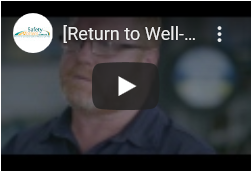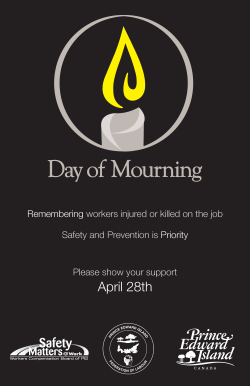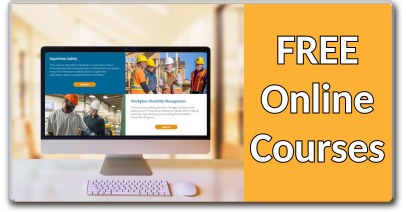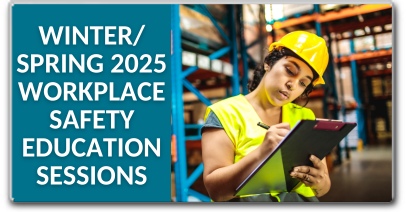Workers Compensation Board of Prince Edward Island
At the WCB, we believe that work-related injuries do not have to happen.
To spread this important message, the WCB is involved in public education initiatives aimed at raising awareness of workplace health and safety and injury prevention.
In the past three years, there have been multiple fines levied for improper asbestos management, unsafe work practices while trenching, and unsafe work at heights. As a result, the WCB developed the campaign, Don’t Become the Worst-Case Scenario, to raise awareness of the importance of workplace safety.
There is always time to follow safe work procedures and comply with your workplace health and safety obligations. Learn more about working at heights, asbestos, and excavation and trenching:
The purpose of worker wellness programs is to improve workers’ health and well-being, often through preventive care. Goals can include preventing and managing chronic diseases to lower their health and economic burden, improving worker morale and motivation, and improving workers’ quality of life.
Implementing a worker wellness program helps workers to adopt behaviours that improve their health, creating a happier, healthier workforce. Not only does the workplace affect the well-being of workers, but the health of workers affects the success of the organization.
Wellness programs can include smoking cessation, weight loss education, fitness challenges, healthy eating education, providing facts on the benefits of drinking water and of walking, wellness clinics, employee and family assistance programs, and many other plans designed to increase the overall health of an individual.
Why Wellness is Important
Wellness is an active process of making choices toward a healthy and fulfilling life. Wellness is especially important as we age because regular exercise and proper nutrition can help prevent a variety of ailments including cardiovascular disease, obesity and fall risk behaviours.
Learn more about the importance of workplace wellness from the CCOHS resources below:
If you would like more information about our prevention campaigns, please contact us.
Prevention Campaigns
At the WCB, we believe that work-related injuries do not have to happen.
To spread this important message, the WCB is involved in public education initiatives aimed at raising awareness of workplace health and safety and injury prevention.
- Don't Become the Worst-Case Scenario
- Working At Heights
- Return to Well - Robert's Story
- Workplace Wellness
- Day of Mourning
Don't Become the Worst-Case Scenario
DON’T become the worst-case scenario. When work sites are not inspected, corners are cut on training, or the right personal protective equipment is not worn, the worst thing can happen…workers can be catastrophically injured or killed.In the past three years, there have been multiple fines levied for improper asbestos management, unsafe work practices while trenching, and unsafe work at heights. As a result, the WCB developed the campaign, Don’t Become the Worst-Case Scenario, to raise awareness of the importance of workplace safety.
There is always time to follow safe work procedures and comply with your workplace health and safety obligations. Learn more about working at heights, asbestos, and excavation and trenching:
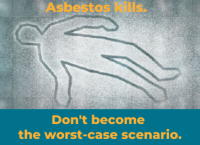
|
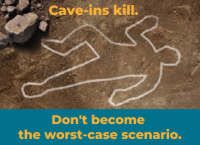
|
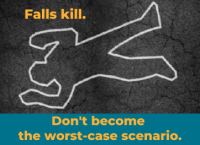
|
Working At Heights
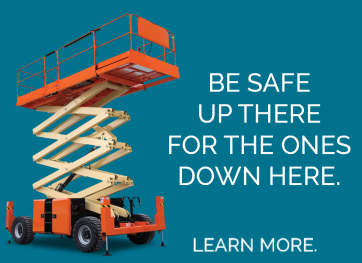
|
In 2019, a worker suffered life altering injuries as a result of being struck by a suspended truss and falling 5.5 meters (18 feet) from unguarded scaffolding to the concrete surface below. As a result of this case, a widespread education campaign was developed to make sure proper precautions are taken, and the legal obligations of employers are followed when it comes to working at heights. Click here for more information about working at heights. |
Return to Well - Robert's Story
Workplace Wellness
Worker health plays a direct role in the overall success of an organization. Creating a healthy workplace motivates workers, reduces absenteeism, and lowers the risk of workplace injuries and accidents.The purpose of worker wellness programs is to improve workers’ health and well-being, often through preventive care. Goals can include preventing and managing chronic diseases to lower their health and economic burden, improving worker morale and motivation, and improving workers’ quality of life.
Implementing a worker wellness program helps workers to adopt behaviours that improve their health, creating a happier, healthier workforce. Not only does the workplace affect the well-being of workers, but the health of workers affects the success of the organization.
Wellness programs can include smoking cessation, weight loss education, fitness challenges, healthy eating education, providing facts on the benefits of drinking water and of walking, wellness clinics, employee and family assistance programs, and many other plans designed to increase the overall health of an individual.
Why Wellness is Important
Wellness is an active process of making choices toward a healthy and fulfilling life. Wellness is especially important as we age because regular exercise and proper nutrition can help prevent a variety of ailments including cardiovascular disease, obesity and fall risk behaviours.
Learn more about the importance of workplace wellness from the CCOHS resources below:
- Workplace Health Program Guide
- Workplace Health and Well-being Promotion - Getting Started
- Workplace Health and Well-being - Sample Workplace Health and Well-being Program Elements
Day of Mourning
If you would like more information about our prevention campaigns, please contact us.



